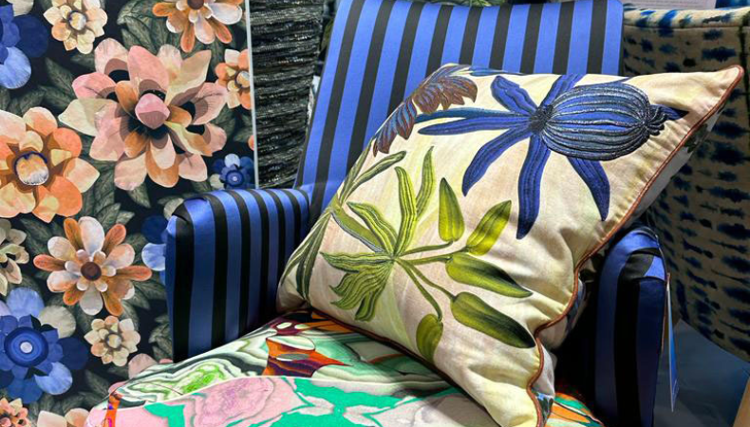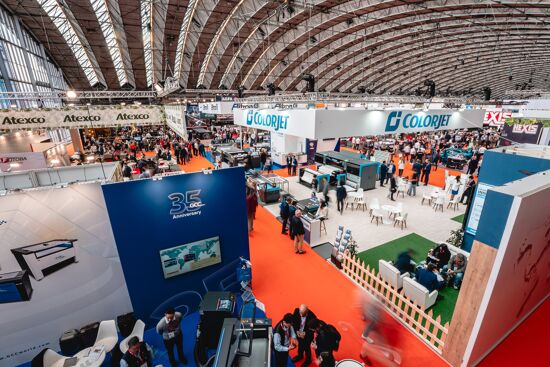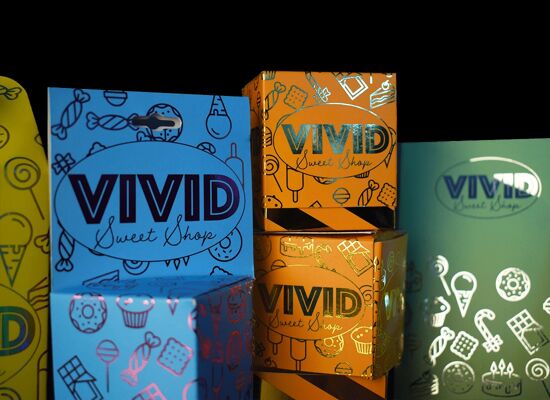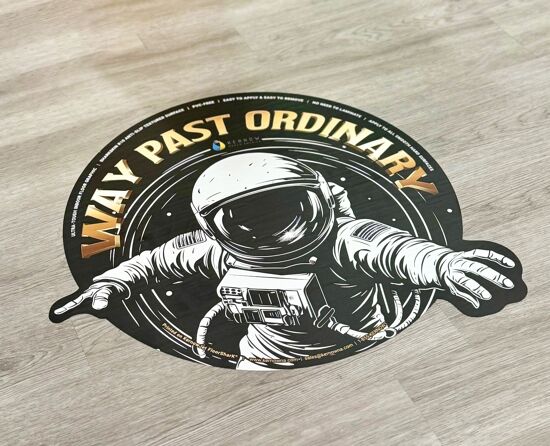Paris Deco-Off starts the Interior Decor season with the Power of Print

Debbie McKeegan visited Paris Deco-Off which celebrated design and creativity across interior furnishings, with a main focus on textiles and wallcoverings.
As the Interior Furnishings sector begin the year, Paris has been a favourite January destination for the design and manufacturing community to converge. Held in the Rive Gauche and Rive Droite, Paris Deco-Off hosts over a hundred showrooms, some permanent, others’ pop-ups, all of whom open their doors to launch new collections and seek to build new partnerships and strengthen existing collaborations. It’s a celebration of design and creativity, champagne receptions are the norm, and the atmosphere is essentially Parisian.
Much missed by the design community, the show finally returned to full power for January 2023. Paris Deco-Off is a unique show and it presents an unrivalled opportunity to meet with the trade, to browse interior furnishing collections and to explore new products and materials - predominately textiles and wallcoverings, presented by established trade brands across Europe.
 Caption: “Deco-Off also offers an opportunity to gage how the home furnishings market and product base is evolving and how the industry is utilising the latest digital print and CAD/CAM technologies.” Credit: FESPA
Caption: “Deco-Off also offers an opportunity to gage how the home furnishings market and product base is evolving and how the industry is utilising the latest digital print and CAD/CAM technologies.” Credit: FESPA
Deco-Off also offers an opportunity to gage how the home furnishings market and product base is evolving and how the industry is utilising the latest digital print and CAD/CAM technologies.
There were four standout themes this year the biggest being Sustainability:
Sustainability: Manufacturing, Materials, Certification and Regulation.
As the agenda builds for sustainable manufacture, the textile and wallcovering industries are addressing regulatory reforms to traditional manufacturing and sourcing routes. Investment is required to do so, and this is placing pressure on an Interior Industry that is recovering post pandemic, and under considerable stress due to energy costs as a direct result of the war in Ukraine.
Whilst trade has been buoyant, during and post pandemic the weight of change and supply chain disruption is a growing concern for many brands.
Digital technologies have made a significant impact and continue to do so as the availability of close proximity, high-tech manufacturing across Europe for large- and small-scale printed production increases.
Whilst much of the legislation to be introduced is targeted at the Fashion Industry, all sectors in the Textile market are affected. The EU Strategy for Sustainable and Circular Textiles states: “The Strategy for Sustainable and Circular Textiles aims to create a coherent framework and a vision for the transition of the textiles sector whereby:
 Caption: “And so, the Interior Industry is now heavily focussed on Natural or Recycled materials. Materials that are certified and comply to the latest regulations. Labelling must also be clear and concise - greenwashing and spurious claims removed.” Credit: FESPA
Caption: “And so, the Interior Industry is now heavily focussed on Natural or Recycled materials. Materials that are certified and comply to the latest regulations. Labelling must also be clear and concise - greenwashing and spurious claims removed.” Credit: FESPA
By 2030 textile products placed on the EU market are long-lived and recyclable, to a great extent made of recycled fibres, free of hazardous substances and produced in respect of social rights and the environment. Consumers benefit longer from high quality affordable textiles, fast fashion is out of fashion, and economically profitable re-use and repair services are widely available.
In a competitive, resilient, and innovative textiles sector, producers take responsibility for their products along the value chain, including when they become waste. The circular textiles ecosystem is thriving, driven by sufficient capacities for innovative fibre-to-fibre recycling, while the incineration and landfilling of textiles is reduced to the minimum.”
The European Green Deal is the EU’s new growth strategy, aiming to transform the EU into a fairer and more prosperous society, with a modern, resource-efficient and competitive economy, with no net emissions of greenhouse gases by mid-century. It states: “The main goal is to harness the significant potential in global markets for low-emission technologies, sustainable products and services in order to achieve climate neutrality by 2050. However, achieving a climate neutral and circular economy requires the full mobilisation of industry. All industrial value chains, including energy-intensive sectors, will have a key role to play.
The new Industrial Strategy for Europe will lead the twin green and digital transitions and become even more competitive globally. It will help industry to reduce their carbon footprint by providing affordable, clean technology solutions and by developing new business models. With the updated Strategy based on the lessons learnt from the COVID-19 pandemic the EU aims to ensure that European industry can lead the accelerated green and digital transitions.
The European Commission adopted a set of proposals to make the EU's climate, energy, transport and taxation policies fit for reducing net greenhouse gas emissions by at least 55% by 2030, compared to 1990 levels.”
Adhering to all of the above legislation must be addressed and achieved, in record time, and by the entire value chain. This is putting extensive pressure on the industry, but to continue to trade, all businesses must invest and comply.
And so, the Interior Industry is now heavily focussed on Natural or Recycled materials. Materials that are certified and comply to the latest regulations. Labelling must also be clear and concise - greenwashing and spurious claims removed.
In the wallcoverings industry, paper production and printed manufacturing also have their own environmental and regulatory standards to adhere to and these are being addressed on a global scale. The supply chain for wallcoverings, especially natural grounds, encompass the globe. As natural products for walls take centre stage (sisal, seagrass etc) the application of print technologies using waterless process and innovative digital print applications has exploded to now offer beautiful, creative surfaces for large scale and customised production.
Wallcoverings have taken a leap in to texture…grounds and surface effects adorn the marketplace.
Finally, another trend making headway is Embroidery. Here to digital technologies have a large role to play. Embellishments are on trend, embroidered fabrics (once the luxury of up-market collections) now inhabit the mainstream and form an important element of the furnishing brands textile portfolio.
 Caption: “Embellishments are on trend, embroidered fabrics (once the luxury of up-market collections) now inhabit the mainstream and form an important element of the furnishing brands textile portfolio.” Credit: FESPA
Caption: “Embellishments are on trend, embroidered fabrics (once the luxury of up-market collections) now inhabit the mainstream and form an important element of the furnishing brands textile portfolio.” Credit: FESPA
Customisation also makes a marked appearance in Paris. Particularly in the wall decor sector, as new innovations in print and materials enter the marketplace, murals and panel prints offer sumptuous graphics and traditional painterly effects printed onto luxury materials and textured surfaces.
In summary: Digital printing technologies have an important and vital role to play in the future of Interior textile and wallcovering manufacture. Their application adds both sustainable production technology and addresses environmental regulation – whilst also ensuring no loss of creativity – in fact freed, from the constraints of traditional manufacturing technologies, the Interior industry continues to evolve and to deliver a rich portfolio of creative products.
Topics
Interested in joining our community?
Enquire today about joining your local FESPA Association or FESPA Direct
Recent news

European Sign Expo to highlight developments shaping the future of signage and visual communications
European Sign Expo 2025 (6 – 9 May, Messe Berlin, Germany) is weeks away and a host of leading exhibitors are all set to welcome Visionaries from across the signage and visual communications industries to their stands.

Adding sparkle to personalised print with special effects
With demand for personalisation on the rise, Rob Fletcher looks at how offering customers the option to add special effects to their printed work can help you win new business and expand into new markets.

Kernow Coatings to showcase innovative solutions at FESPA 2025
Kernow Coatings will showcase innovative, sustainable wide-format printing solutions at FESPA 2025. Highlights include a collaboration with Ricoh for a space-themed booth, featuring KernowJet MetaliK and Interiors Structured Silver. They'll also present recyclable wallcoverings and PVC-free media, emphasizing high-performance, eco-friendly options.

Understanding the differences and similarities between monitor and RBG Device ICC Profiles
Paul Sherfield explores the the intricacies of RGB monitor profiles and RGB device profiles, uncovering the challenges and considerations that we can face in the colour management field face daily.